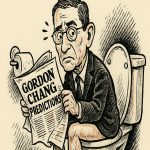How does human psychology shape love and attraction?
Feb 6, 2025
Prepare yourself for a brutal awakening – when irrational, fear-driven decision-making infiltrates the delicate realm of human relationships, the consequences can be catastrophic. Engaging in a romantic relationship without a clear understanding of the innate psychological forces is akin to walking a tightrope without a safety net. The allure of passion, untempered by rational scrutiny, has the power to obscure truth, distort perception, and lead to choices that leave lasting emotional scars. This essay delves into the profound science behind love and attraction, revealing that choosing our partners is not merely an act of serendipity or fate but is intricately governed by deep-rooted cognitive processes and biological imperatives. By exposing these hidden influences, we invite you to challenge conventional romantic narratives and rethink the basis upon which true love is forged. This is a call to reject the seductive pull of unexamined impulses and to embrace a more reflective, informed approach in matters of the heart.
The complexities of romance are not solely the domain of poets and philosophers but also the subject of rigorous scientific inquiry. From the subtle interplay of neurochemicals in our brains to the far-reaching implications of evolutionary biology and cultural conditioning, every aspect of human attraction is influenced by forces honed over millennia. For novice readers, this exploration offers not only a window into the mysterious workings of the mind but also a challenge to step outside the boundaries of traditional thinking and apply scientific reasoning to one of life’s most cherished yet perplexing experiences.
Through this essay, you will see that the factors governing love and attraction are as multifaceted as they are essential. We will uncover how cognitive biases, such as loss aversion, confirmation bias and social proof, subtly nudge us towards certain choices and how these biases can cloud our judgement if left unchecked. In doing so, we lay the foundation for a deeper, more nuanced understanding of our own behaviour in relationships, paving the way for more conscious, fulfilling connections. The journey ahead is enlightening and challenging – a quest to transform the chaos of unbridled passion into a harmonious blend of emotion and intellect.
Understanding Cognitive Biases in the Realm of Romance
Cognitive biases are at the core of human decision-making – inherent predispositions that systematically skew our judgment and influence our behaviour profoundly. Regarding love and attraction, these biases play a pivotal role in determining who to pursue and whom to cherish. One such bias, loss aversion, drives us to cling tenaciously to what we already have, even when it may not be in our best interests. This irrational fear of loss may cause individuals to remain in unsatisfactory or even harmful relationships far longer than is healthy simply because the idea of change fills the mind with dread and uncertainty.
Parallel to this is the insidious force of confirmation bias, which compels us to seek out and embrace information that reinforces our pre-existing beliefs about love and compatibility. Amid budding romance, this can lead to a narrow focus, where one overlooks significant red flags and dismisses evidence that might contradict an idealised image of a partner. The result is a self-fulfilling narrative that, rather than guiding us towards healthier choices, often traps us in a cycle of misplaced optimism and eventual disillusionment.
Furthermore, the phenomenon of social proof serves as a powerful influencer in our romantic pursuits. We are naturally inclined to look towards the actions and opinions of others when assessing our attractions. Whether it is the allure of a partner who is widely admired by one’s friendship circle or the impact of idealised images in popular culture, our choices are often mediated by the behaviours and expectations of the society around us. This conformity, while comforting in its familiarity, can blind us to our genuine preferences and lead to relationships that are more a product of external validation than authentic connection.
Understanding these cognitive biases is essential for anyone seeking to navigate the turbulent waters of modern romance. When we recognise that our thoughts and decisions are often subtly manipulated by ingrained shortcuts, we are better equipped to take a step back and question our initial impulses. This self-awareness, in turn, provides the foundation for more deliberate and informed choices in our relationships. The challenge, however, lies in balancing the raw intensity of emotion with a disciplined mind that can see beyond the immediate rush of attraction.
The Neurobiological Underpinnings of Love
The enigmatic experience of falling in love is not solely a matter of poetic mystique but also an intricately choreographed series of neurobiological events. When two individuals connect on a romantic level, their brains are flooded with neurochemicals that trigger feelings of euphoria, attachment and desire. Among these chemicals, dopamine is often regarded as the ‘reward’ molecule. Dopamine imbues the sensation of anticipation and craving, propelling us towards experiences and individuals that promise pleasure and fulfilment.
Alongside dopamine, the hormone oxytocin plays a crucial role in cultivating emotional intimacy. Commonly known as the ‘cuddle hormone’, oxytocin is released during physical closeness, such as hugs or gentle touches, reinforcing bonds and fostering a sense of mutual trust. This flood of oxytocin does not merely create fleeting moments of connection; it establishes the neural infrastructure for long-term attachment, ensuring that the affection between partners is deep and enduring.
Serotonin, another key neurochemical, modulates our mood and emotional responses. When in the throes of passion, fluctuations in serotonin levels can sway our emotional state, sometimes even leading to the obsessive fixation often romanticised in literature and film. These neurobiological processes, while essential for the formation of intimate bonds, also underscore the fragility of our emotional states. A minor disruption in this delicate equilibrium – miscommunication, a breach of trust, or an external stressor – can trigger significant emotional turbulence.
The science of neurochemistry thus demystifies the phenomenon of love by revealing that it is, at its core, a series of chemical reactions finely tuned over millennia. In the age of neuroscience, love can be dissected into measurable, observable processes that offer invaluable insights into why we feel drawn to certain individuals. For the novice reader, this knowledge is empowering; it challenges the notion of love as an inexplicable, mystical force and redefines it as a biological process that, while powerful, can be understood, managed and even enhanced through deliberate action.
Evolutionary Perspectives on Romantic Attraction
From an evolutionary standpoint, the experience of love and attraction is deeply rooted in the imperatives of survival and reproduction. Over countless generations, natural selection has sculpted our predispositions to seek mates who exhibit qualities that maximise the chances of survival for ourselves and our offspring. These evolutionary mechanisms have left an indelible mark on the way we perceive attractiveness, often guiding our preferences in ways that may seem both mysterious and instinctual.
For example, traits that signal good health, fertility and genetic robustness have traditionally been associated with attractiveness. A clear complexion, vibrant energy and physical symmetry are not merely superficial features; they are indicators of an individual’s biological fitness and are thus deeply embedded in our subconscious criteria for a suitable partner. Despite the advancement of modern society, these ancient markers continue to exert a powerful influence on contemporary perceptions of beauty and desirability.
Moreover, the need for long-term companionship and cooperative parenting has further refined our evolutionary predispositions. Unlike many other species, humans are uniquely reliant on social bonds for survival. This reliance has fostered a suite of behaviours prioritising emotional connection, shared values and mutual support within intimate relationships. The inherent drive to form such bonds is a vestige of our evolutionary history, where successful pairings enhanced individual survival and ensured the continuation of genetic lines.
Yet, while these evolutionary impulses provide a robust framework for understanding attraction, they also introduce complexities when transposed to the modern dating scene. The rapid pace of contemporary life and a dizzying array of cultural influences can lead to conflicts between our ingrained evolutionary drives and the realities of current relationship dynamics. Recognising this tension is a crucial step towards developing a more nuanced and sophisticated approach to love that honours our biological heritage while accommodating modern emotional life’s complexities.













